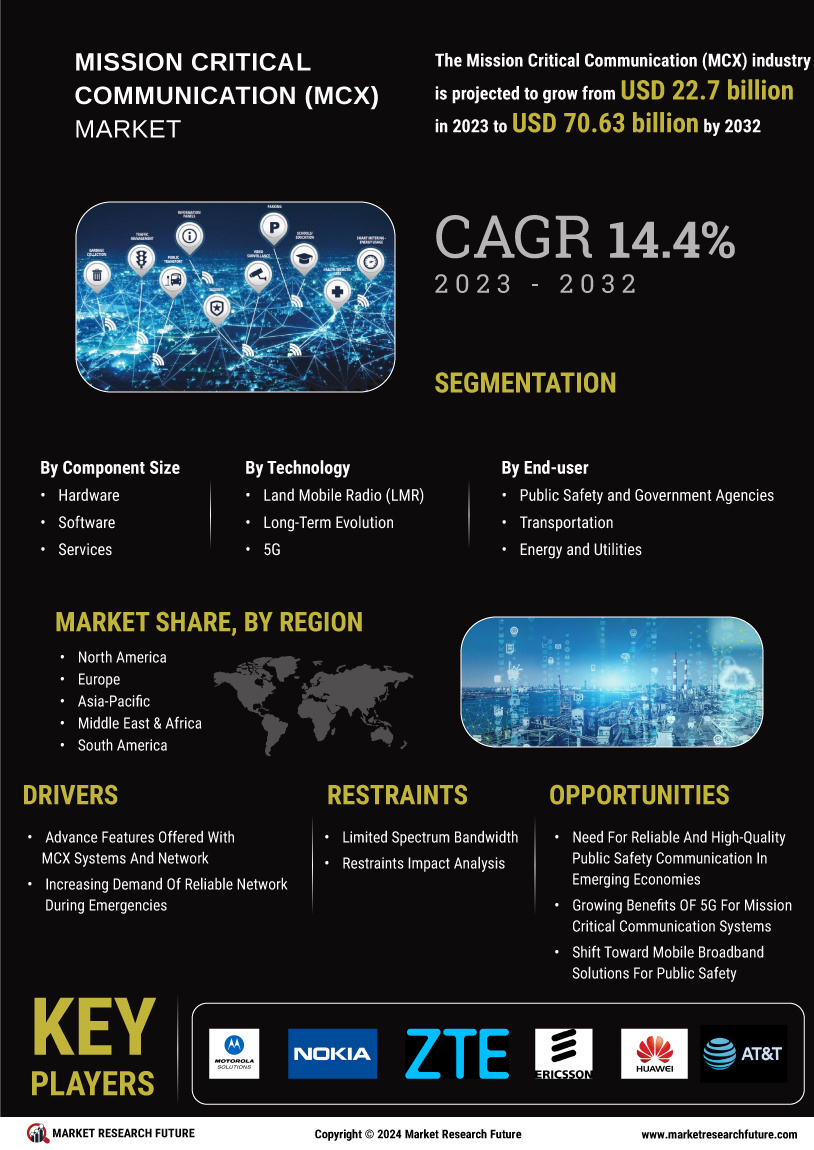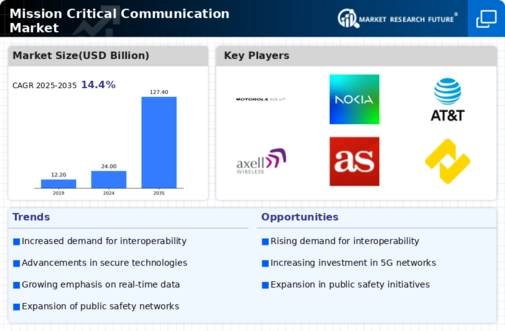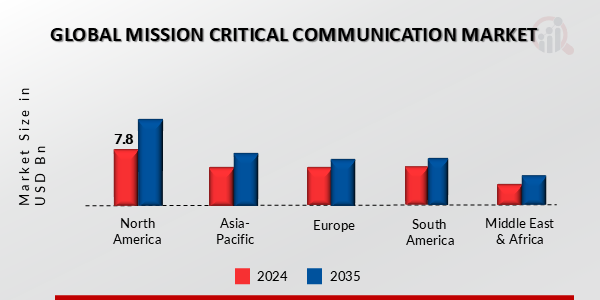Market Growth Projections
The Global Mission Critical Communication Market Industry is projected to experience substantial growth in the coming years. The market is expected to reach 24.0 USD Billion in 2024 and is anticipated to expand to 127.4 USD Billion by 2035. This growth trajectory indicates a compound annual growth rate of 16.39% from 2025 to 2035. Such projections underscore the increasing recognition of the importance of mission-critical communication systems across various sectors, including public safety, transportation, and utilities. As organizations prioritize the enhancement of their communication capabilities, the market is poised for robust expansion.
Government Initiatives and Funding
Government initiatives and funding significantly influence the Global Mission Critical Communication Market Industry. Many governments are investing in upgrading communication systems to enhance public safety and emergency response capabilities. For instance, initiatives aimed at improving communication networks for first responders are becoming more prevalent, with substantial budgets allocated for infrastructure development. This trend is evident in various countries that prioritize the establishment of resilient communication frameworks. As governments continue to recognize the importance of effective communication in crisis situations, the market is likely to benefit from increased public sector investment, further propelling its growth.
Rising Security Concerns and Threats
Rising security concerns and threats are driving the Global Mission Critical Communication Market Industry towards enhanced communication solutions. With the increasing frequency of natural disasters, terrorist activities, and cyber threats, organizations are compelled to adopt more secure and reliable communication systems. The need for encrypted communication channels and secure data transmission is paramount in ensuring the safety of sensitive information. Consequently, this demand for security-focused communication solutions is expected to contribute to the market's expansion. Organizations are investing in advanced technologies that provide secure communication capabilities, thereby addressing the evolving landscape of security threats.
Integration of IoT and Smart Technologies
The integration of Internet of Things (IoT) and smart technologies is reshaping the Global Mission Critical Communication Market Industry. The proliferation of connected devices enhances situational awareness and enables real-time monitoring of critical infrastructure. For example, smart sensors can provide valuable data during emergencies, facilitating informed decision-making for first responders. This integration not only improves operational efficiency but also enhances the overall effectiveness of communication systems. As organizations increasingly adopt IoT solutions, the market is likely to witness accelerated growth, driven by the demand for intelligent communication networks that support real-time data exchange.
Increasing Demand for Reliable Communication Systems
The Global Mission Critical Communication Market Industry experiences a surge in demand for reliable communication systems, particularly in sectors such as public safety, transportation, and utilities. As urbanization accelerates, the need for robust communication networks becomes paramount to ensure seamless coordination during emergencies. For instance, the integration of advanced technologies like LTE and 5G enhances the efficiency of communication systems, enabling real-time data sharing. This trend is reflected in the projected market growth, with the industry expected to reach 24.0 USD Billion in 2024 and expand significantly to 127.4 USD Billion by 2035, indicating a compound annual growth rate of 16.39% from 2025 to 2035.
Technological Advancements in Communication Infrastructure
Technological advancements play a crucial role in shaping the Global Mission Critical Communication Market Industry. Innovations such as the deployment of next-generation broadband networks and the adoption of artificial intelligence are transforming communication capabilities. These advancements facilitate enhanced interoperability among various agencies, which is essential for effective crisis management. For example, the implementation of cloud-based solutions allows for scalable and flexible communication systems, thereby improving response times during critical incidents. As organizations increasingly recognize the importance of these technologies, the market is poised for substantial growth, driven by the need for modernized communication infrastructure.








